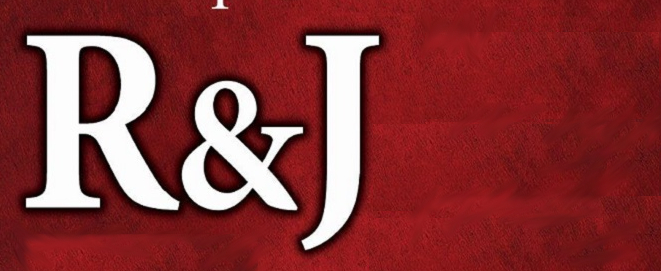It’s called Shakespeare’s R&J, as if they wanted to abandon the fustiness, the expectations, the preconceptions that come with the full name Romeo and Juliet, but realised that if they did so, no one would know who wrote it, so they put all that back in with the inclusion of the playwright’s name. It’s a decision that hints at the duality of the production.
Set in a 1950s all boy’s Catholic high school, R&J casts both Romeo and Juliet as young men, so far very modern, but opens with Romeo, writing a love letter rich in archaic words. The aim of this marriage of language and setting is to bring together the classic notions of a highly traditional romance within its contemporary context, and under deft direction would neatly parallel Shakespeare’s story of love, hate and the sins of the father. It is a balance that exists on a knife-edge, and the play’s director needs to be mindful of this as they draw the strands of the story together echoing one world against the other thereby encoding the modern setting with the lessons of the bard’s play. It is a balance that SA director Fred Abrahamse finds himself incapable of achieving.
The opening is fresh, a montage of cultivated typical moments in which simple sets are altered on stage by the actors themselves to create a tableau of strict Catholic school life in the 1950s. It’s a very particular aesthetic and stylistic choice that captivates the audience and sets a strong link with the world, but which sadly peters away over the course of the production.
Generally, the cast of young actors holds the weave together. Competently blending the language and demands of their director with the requirements of the roles.
Dean Balie is notably phenomenal as Mercutio, Lady Capulet and Friar Laurence. There is a subtlety to his art. Mesmerising, gripping, and without fanfare Balie sheds one character and dons another as easily as slipping off a shirt. Without strong accents, or character traits he simply becomes his characters, the language easing off his tongue as if spoken by his parents.
Despite the fact that the words are deeply understood by the actors, and their performances convey that meaning to even the school-going audience members, the play’s themes, meanings and even storylines are lost.
Three worlds
There are three worlds that coexist within the play. The conventional world of boys at a 1950s school. The world wherein those boys, late at night are acting as the characters in Shakespeare’s Romeo & Juliet and the world where the audience has suspended all disbelief, and are fully invested in Shakespeare’s classic story. As a result, the direction needs to be exemplary, subtly shifting the stage and the audience’s perceptions through these different worlds.
At times this is indeed what happens, as Mercutio’s sublime death is captivated in the third world without ever breaking the sense of belief, but for the most part, confusion abounds due to some immature choices from one of SA’s most revered Shakespearan directors.
The lighting is all over the place. Conventions are set up only to be abandoned, with lighting choices meant to establish settings, and support certain themes, woefully inconsistent. Blocking also falls prey to all too familiar erratic decisions. Clumsy choices, such actors who are speaking important lines also simultaneously moving scenery distract from the performance and weaken the whole.
Perhaps most criminally due to this, there is little motivation for the update or the setting. While the press releases claim “their love for one another becomes the ultimate forbidden love in an austere, repressive all male milieu” the tepid directorial choices around the recrimination of the modern boy’s relationship, and the inconsistent scene-setting, strips the play of its traditional warning on the dangers of blind hate.
Because the direction leaves us constantly uncertain of which of the three worlds we are in at any given moment the opportunities for echoing between the stories are lost. As such critical moments such as when the two boys are literally attacked lose any sense of the tension and danger that should plague them in their budding “real-world” romance, but which does exist for the titular characters in Shakespeare’s classic play.
Just who is being attacked here? Is it the boys, or is it Romeo and Juliet? What is going on? These are not feelings an audience should be experiencing at important scenes, and this is by no means the only time it happens. This repeated failure nullifies the entire point of drawing the parallel between Shakespeare’s star-crossed lovers and the modern, but equally forbidden love of the boys in that cruel and repressive environment.
In short, it’s an interesting take, and a clever play, that is sorely let down by indecisive directing, and a cast that, while excellent for its young age, is not quite capable of overcoming it.
R&J is on at the Pieter Torien Theatre at Monte Casino, JHB until the 8th of September.


